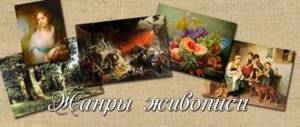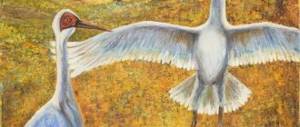Presentation “Gifts of the forest - berries”
Slides and text of this presentation
Slide 1
GIFTS OF THE FOREST BERRIES LOCAL HISTORY Grade 2 Kyzyurova Tatyana Vasilievna Primary school teacher Syktyvkar
Slide 2
Let's determine the main question of the lesson: Red and black, sour, sweet So they just ask to be put into your mouth, And into jam, and into compote. berries Lesson topic Forest berry gifts
Slide 3
Forest berry gifts rose hips juniper blueberries lingonberries blueberries strawberries About 30 types of berries are found in the forests surrounding Syktyvkar. What other berries can you name?
Slide 4
Why are berries interesting? These berries are juicy, but their seeds are very large. Drupe leaves predict the weather. If the leaves are curled downwards, the weather will be good. Shiksha (crowberry) - a small black berry ripens on branches spreading along the ground, which contains very liquid pulp with a slightly sweet taste. They call it bear blueberry.
Slide 5
Why are berries interesting? Bearberry. It is easily confused with lingonberries. But this berry is inedible! Knyazhenika is similar to strawberries, but darker in color; it is the most aromatic, fragrant, delicious berry of the northern forests. "Royal" berry. Kumanika is a berry similar to a cloudberry, but the color is raspberry. Our northern forest is very rich in berry gifts. Berry plants grow in the forest, in clearings, and in swamps. They are tasty, healthy, healing.
Slide 6
Quiz What berry is red when unripe, and yellow when ripe? Which berries got their name from the words: thorn? bone? What plants are named after the color of their berries? In the forest in late autumn, wherever moss grows, the miracle berry turns red along the hummocks among the swamps. Cloudberry Rosehip Drupeberry Blueberry Blueberry Cranberry
Slide 7
Find out the berries cranberries raspberries blueberries rowan
Slide 8
Add the names of the berries I K A I K A I K A I K A I K A Z E M L Y N G O L U B CH E R N K U M A N K O S T Y N
Slide 9
Name only wild berries LINGONBERRY ROSE HIP CRANBERRY CHERRY STRAWBERRY PLUMBER RASPBERRY BLUEBERRY
lusana.ru
Presentation on the topic “Berries”
Moscow City Pedagogical University
BerriesCowberry
Cowberry
Grape
StrawberriesStrawberries
Blueberry
Cherry
Cherry
BlackberryGooseberry
Strawberry
Black currant
Red RibesWatermelon
Watermelon
Plum
Raspberries
Gooseberry
Cranberry
Guess it!!!
There's a bone inside.(cherry)Who loves me,Who loves me,He is happy to bow.And she gave me a nameNative land.(Strawberry)Berries are healthyBerries are healthyWonderful beauty:Bright, fragrant,Ah ah ah! Prickly.(rose hip)Balls hang on the branches -Balls hang on the branches -Turned blue from the heat.(plum)Dressed like a hedgehog,Dressed like a hedgehog,And he crawls like a snake.(blackberry)Green berriesGreen berriesAnd praised by everyone,Grow with bonesHanging with tassels.(grape)I'm red, I'm sourI'm red, I'm sourI grew up in a swampRipened under the snow.Come on, who knows me?(cranberry)The sun scatters arrows,The sun scatters arrows,Lighting up the pines.What kind of berry is ripe?Is it blue?On bushes, under leavesSomeone threw beads -All clearings have blue dotsBy the green pines.(Blueberry)Lush bush of black berriesLush bush of black berriesThey taste good.(currant)Now name the berries in order, starting with the first.Name the berry!Well done!!!GAMESBerry gladeTo better understand the topic of “berries,” you can play a game: Take skittles, attach pictures of different berries to them, and place them in the room. Each player will collect certain berries. For example, Kolya collects black currants, Katya collects cranberries, and Masha collects strawberries. The winner will be the one who collects the most berries given to him in a certain time.I play with my mother. BerriesA pleasant voice of the announcer and a colorful slide show will tell the little one a lot of interesting things: where the berries come from, how they grow and ripen. Your little one will be able to not only look at the pictures, but also color them by pressing buttons on the keyboard or mouse. Scientists have long identified a connection between the development of fine motor skills in children and intellectual abilities. If a child plays special educational games, he will learn to write and read much faster.Material used:Berries - children's educational game (www.diagora.ru)V.S. Volodin “Album on speech development”Demonstrative material for frontal exercises “Berries”Children's portal "Sun" (www.solnet.ee) |
rpp.nashaucheba.ru
What crafts on the theme “Autumn” can preschoolers make with their own hands?
Older children (4-6 years old) usually already know how to use scissors, so you can safely introduce paper crafts on the theme “Autumn”:
- coloring pages Subsequently, you can not just color the drawing on paper, but try to paint a cutting board or decorative plate.
- simple origami;
Origami maple leaf
- paper applications;
- paper lanterns with curly cutouts in the form of trees and leaves;
- crafts with weaving strips of paper (paper weaving).
As you can see, autumn crafts made from paper can be no less interesting and colorful than those made from natural materials, but it is still necessary to introduce children to the numerous gifts of nature.
Crafts made from natural materials for children 4-6 years old:
- crafts made from pine cones (hedgehogs, goblin, animals, spiders, etc.);
- men and animals made from acorns, chestnuts and matches;
- more complex applications from leaves and seeds. Here you can take leaves of different shapes, different colors and sizes and make a picture that is close to reality. Suitable seeds: pumpkin, sunflower, squash, flax. You can also take hard peas in halves, sesame seeds - in general, the seeds should also be of different shapes, different colors and sizes in order to make the picture more lively and colorful.
Wild berries – presentation, report, project
Feedback
If you were unable to find and download the presentation report, you can order it on our website. We will try to find the material you need and send it by email. Feel free to contact us if you have any questions or concerns:
Feel free to contact us if you have any questions or concerns:
Email:
we are in social networks
Social networks have long become an integral part of our lives. We learn news from them, communicate with friends, participate in interactive interest clubs
VKontakte >
What is Myslide.ru?
Myslide.ru is a website for presentations, reports, and projects in PowerPoint format. We help teachers, schoolchildren, students, teachers store and share their educational materials with other users.
For copyright holders >
myslide.ru
How to make Doman cards yourself:
Print the cards on thick paper or cardboard, 2, 4 or 6 pieces per sheet. To conduct classes using the Doman method, the cards are ready, you can show them to your child and say the name of the picture.
These Doman cards will help you quickly learn all the berries with your child.
Good luck and new discoveries to your baby!
Educational video for children (toddlers and preschoolers) made according to the Doman method “Prodigy from the cradle” - educational cards, educational pictures on various topics from part 1, part 2 of the Doman method, which can be watched for free here or on our Channel Early Childhood Development on YouTube
Educational cards using the Doman method with pictures of berries for children
Educational cards using the Doman method with pictures of berries for children
Educational cards using the Doman method with pictures of berries for children
Educational cards using the Doman method with pictures of berries for children
Educational cards using the Doman method with pictures of berries for children
Educational cards using the Doman method with pictures of berries for children
Educational cards using the Doman method with pictures of berries for children
Educational cards using the Doman method with pictures of berries for children
Educational cards using the Doman method with pictures of berries for children
Educational cards using the Doman method with pictures of berries for children
Educational cards using the Doman method with pictures of berries for children
Educational cards using the Doman method with pictures of berries for children
Educational cards using the Doman method with pictures of berries for children
Educational cards using the Doman method berries pictures for children
Educational cards using the Doman method berries pictures for children
Educational cards using the Doman method berries pictures for children
Educational cards using the Doman method berries pictures for children
Educational cards using the Doman method berries pictures for children
Educational cards using the Doman method berries pictures for children
Educational cards using the Doman method berries pictures for children
Presentation “Wild berries of the Bolotninsky district”
Slides and text of this presentation
Slide 1
Wild berries of the Bolotninsky district
Slide 2
Raspberries Raspberries grow in clearings, forests, and river banks. Often grown in gardens. Raspberry fruits are consumed both fresh and frozen or used to make jam, jelly, marmalade, and juices. In folk medicine, the fruits and leaves are used for colds and flu, as an antipyretic. The leaves can serve as a tea substitute.
Slide 3
Currants The most famous types of currants are black and red. The difference between them, besides the color of the berries, is that black currant leaves and berries are extremely fragrant. In addition to eating directly, currant berries are used to make jam, compote, jellies, syrups and currant wine. Leaves and fruits are used to prepare decoctions and teas.
Slide 4
Strawberry The Russian name “Strawberry” comes from the old Russian word “Strawberry”, and was named so because its berries hang close to the ground. The fruits of the plant have been used as food by humans since ancient times. Strawberry leaves are used as a medicinal raw material. An aqueous infusion of wild strawberry leaves is used as a diuretic. The fruits are used as a vitamin supplement.
Slide 5
Lingonberry Lingonberry grows in dry and damp coniferous and deciduous forests, sometimes in peat bogs. Lingonberries are widely used for candiing, preparing candy fillings, jam, marinade, and fruit drinks. Fresh lingonberry fruits are used for vitamin deficiencies, as a laxative, antiseptic and choleretic agent. A decoction of berries quenches thirst well during fever.
Slide 6
Bird cherry Ripe fruits have a strengthening, vitamin, restorative, anti-inflammatory effect, normalize the function of the intestines and stomach. Bird cherry bark can be used to dye fabrics and leathers in green and red-brown tones; the fruits give a dark red tint. Ripe fruits are eaten fresh and used to make soft drinks. Ground dry bird cherry fruits are a good filling for pies and cheesecakes.
Slide 7
Drupes Drupes are a small perennial herbaceous plant. The use of Drupes is highly desirable and useful for anemia and colds. In Siberia, infusions of leaves are used as a heart pain reliever, for migraines, dandruff, and to strengthen hair. From stone fruits you can make kvass and fruit drinks, jelly and compotes, jam and jellies, syrups and juices, mousses and seasonings.
Slide 8
The fruits produce red dye, the bark produces black-green dye for wool, and the leaves dye fabrics in various tones. A decoction of berries with honey is used for colds, hoarseness, and an infusion of branches regulates blood circulation. The berries are used to make juices and jelly. They are also used to make pie filling and marmalade. Vinegar is made from the juice. The seeds have a tonic effect and are sometimes used as a coffee substitute. Kalina
lusana.ru
More from my site
- Country house applique – Three-dimensional applique “Country house” (4th grade)
- Technology 4th grade how to make a tank from cardboard - fine art and drawing: Tank. Car assembly





